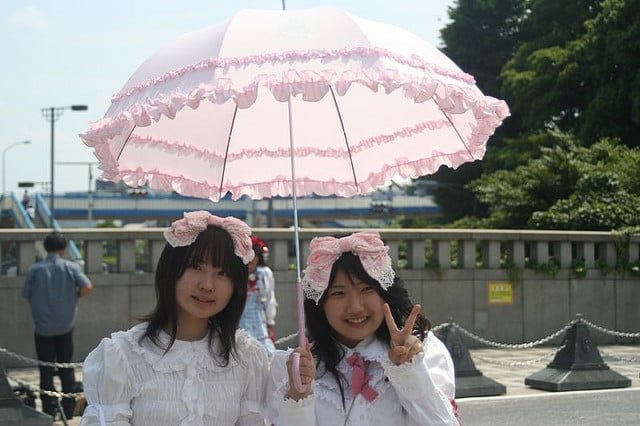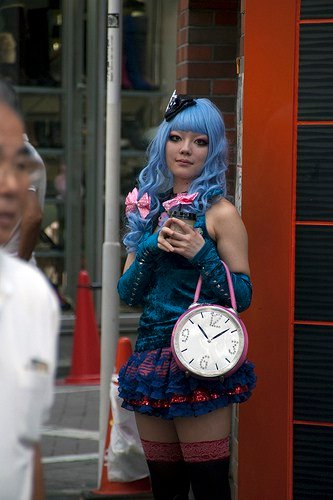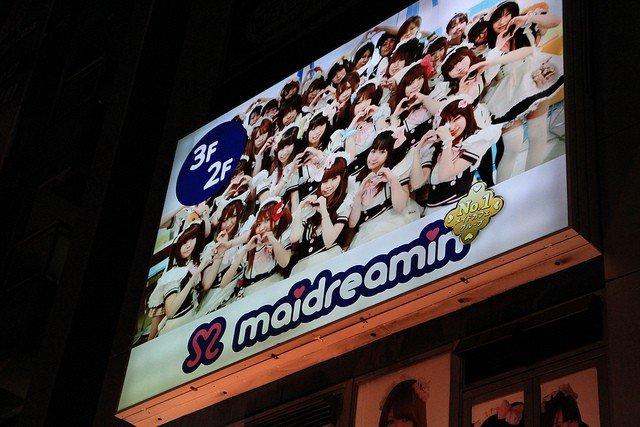Peeling Back Layers of Japanese Culture

What is it that makes Japanese culture so peculiar and intriguing? Though it’s far reaching—anime and Hello Kitty have fans worldwide—it’s also quite insular. To dig deeper into what’s behind some common aspects of Japanese culture, we sat down with one of our Tokyo docents, cultural anthropologist Troy Fisher-Harper.
Asked about café culture, cosplay, love hotels, and kawaii or cuteness, Fisher-Harper said it all comes back to the concept of uchi-soto—in-groups vs. out-groups. In- groups are familiar, safe, and known. Out-groups are the opposite of that. These central aspects of Japanese culture are, for Japanese, valuable escapes from the every day. “When you step outside of your normal context,” says Fisher-Harper, “you are free to reinvent yourself. You’re free from your normal social network of work and home, and because you’re free of those constraints, you can become whomever you want.”
Cosplay
“Walking around Harajuku, you’ll see cosplay enthusiasts decked out in elaborate get-ups, imitating their favorite anime characters. You’ll see people dressed in Rockabilly style, looking like Betty Boop, and dressed up as all sorts of anime and manga characters. There are shops where you can buy pre-made costumes, but many people make their own,” Fisher-Harper says. “You’ll often see what I call the ‘Gothic Holly Hobbies. There are women who dress up in frilly, poofy dresses and tiny little lace hats, and then there’s a subset of that group where all the clothing is black or red.” Cosplay is “a way for them to step out of their regular lives. The costume is an escape route.”

Café culture
A far cry from the cigarette and coffee-scented café culture found in Europe, Japan’s café culture is heavy on costumes and cute. “Maid cafés and butler cafés are quite common; these are not where people come dressed up as maids and butlers, but where people come to be served by waitstaff dressed as maids and butlers. These cafés are a place where people who otherwise feel powerless can feel that, for a change, people are taking care of them. The butler cafes have almost exclusively women clientele and are probably more expensive,” says Fisher-Harper. This segues into host and hostess bars, patronized by businessmen and groups of women, respectively. “A hostess bar is a place where you go where you pay a young woman in a short skirt to giggle and pour you whiskey.” With a host bar, you’re paying a young man, instead. There is heavy drinking on the part of the customers, but there’s no sex involved.
Then there are all the animal cafes. While cat cafes are the most common, Fisher-Harper says you’ll find “rabbit cafes, dog cafes, ferret cafes…I saw on TV one that was for falconers!” You can bring your own pet or hang out with the ones there, and Fisher-Harper says it’s a way for people to socialize with their friends and make new friends while enjoying the company of pets.
Kawaii
Kawaii, or cuteness, is one of Japan’s most widespread cultural phenomena. Sanrio and Pokémon characters are two well-known commercial examples. One of the most recognizable forms of kawaii that you’ll see on the streets of Tokyo is Lolita fashion. This has nothing to do with Vladimir Nabokov’s seminal novel; in fact, it’s just the opposite. Girls dressed in Lolita fashion go all out with the sweet, innocent look, which is heavy pink and white, with ruffles, lace, bows, and cutesy poses. “Kawaii can stem from a desire to feel control over your life,” says Fisher-Harper, who adds that many Japanese do not feel that they otherwise have this. “You want to protect and take care of cute things. They make you feel good. You can be responsible for them. They’re easy to forgive.”
Love hotels
“Tokyo’s incredible density gave rise to the popularity of these. So too have marriages. In Japan, the idea of a love marriage is relatively new. There are no arranged marriages, but the formalized introduction exists. The two families will meet—once for lunch, and a second time for lunch if the first time went well. Usually by the second time, though, it’s assumed the relationship will go forward. Having love in your marriage is an ideal, but it’s not expected. However, people being people, there’s still the desire for love.”
“So many of these love hotels are done in these wild architectural styles; they’re shaped like UFOs or Greek temples. You go into them and there are themed rooms—dungeons, classrooms—and some that are incredibly opulent, filled with Louis XV Baroque-style furniture. The reason these rooms are themed so elaborately is that they help cement that fact that people who are going there have stepped outside of their normal context.”

http://blog.contexttravel.com/history-lesson-peeling-back-layers-of-japanese-culture/